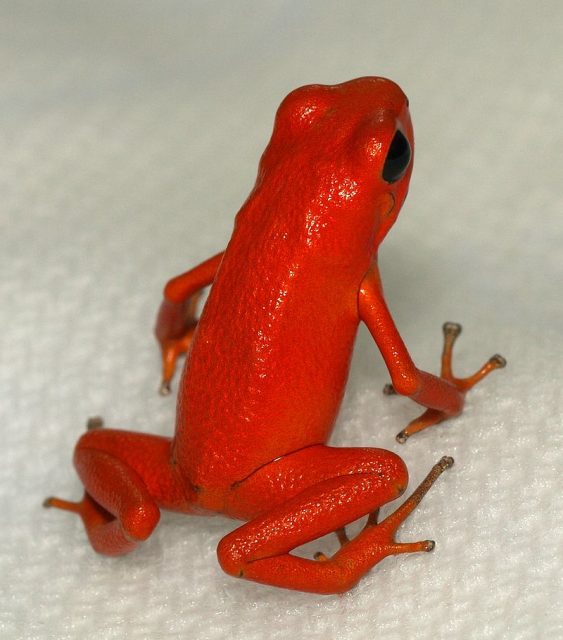Type the name of the breed you're looking for below
[wpdreams_ajaxsearchlite] Don't see the breed your're looking for? Click here and let us know!
Strawberry Dart Frog
| Place of Origin and Range | The Strawberry Dart Frog is a species of small poison dart frog found in Central America. |
| Description | The Strawberry poison frog is perhaps most famous for its widespread variation in colouration, comprising approximately 15–30 colour morphs, most of which are presumed to be true-breeding. |
| Adult Size | Can grow up to 1.5 in(3.75 cm) |
| Accommodation | Hunting, courting, and sleeping in the trees, but as it is a small frog, it cannot jump far enough to span the distances between trees, so it returns to the ground to travel. Lots of branches for climbing and a moist substrate to keep high humidity. To prevent escape, many frog keepers move their amphibians in fine-meshed nets or with cupped hands. A partly terrestrial, partly arboreal enclosure should also be provided. Poison dart frogs may be small, but are very active and need a suitably large terrarium (usually 100 x 60 x 60 cm) with a high level of humidity. Live plants should also be added to provide hiding places. |
| Lifespan | Can live up to 15 years |
| Feeding / Diet | Feeds on termites, aphids, fruit flies, crickets, and any other small non-noxious insects. |
| Breeding | The strawberry poison frog has dual parental care. The males defend and water the nests, and the females feed the oophagous tadpoles their unfertilized eggs. Although both sexes contribute to parental care, females invest more heavily in terms of energy expenditure, time investment, and loss of potential reproduction. Females provide energetically costly eggs to the tadpoles for 6–8 weeks (until metamorphosis), remain sexually inactive during tadpole rearing, and care for only one clutch of four to six tadpoles at a time. The males, though, contribute the relatively "cheap" (in terms of energy) act of watering and protecting the eggs for a relatively short period (10–12 days), and can care for multiple nests at one time. The extreme maternal investment in their offspring is believed to be the result of high egg mortality. Only 5–12% of the clutch develops into tadpoles, so the female's fitness may be best increased by making sure those few eggs that form tadpoles survive. |



